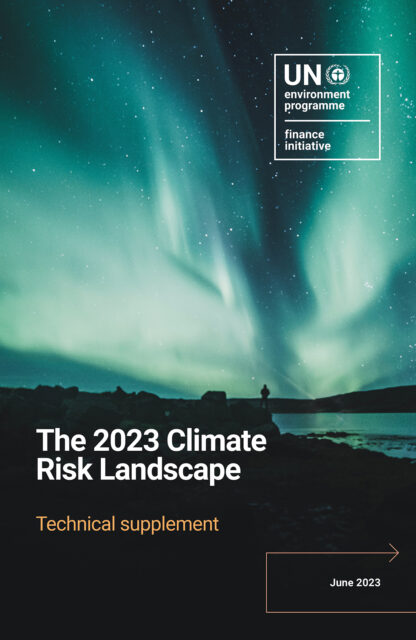Understanding the underlying assumptions and definitions used in climate risk assessments is vital for financial institutions integrating climate risk analyses into their operations. In order to help financial institutions accurately interpret the outcomes of climate risk analysis and make more informed decisions based on them, UNEP FI has developed a technical supplement to the 2023 Climate Risk Landscape Report.
This supplement presents a comprehensive analysis of climate risk assessment outcomes from multiple vendors, offering valuable insights into the impact of a transition to a low-carbon economy and climate risks on financial institutions’ portfolios. Based on a dummy portfolio, it showcases the importance of ensuring the long-term resilience of the portfolio and considering both transition and physical risks. It also identifies data availability as a significant challenge for vendors in delivering more precise analytics and looks into the various strategies employed to address data gaps.
NEW: In June 2023, UNEP FI’s Climate Risk and TCFD Programme published a Climate Risk Tool Dashboard to further support financial institutions navigate through the ever-evolving climate risk tool universe. This database aims at enhancing climate risk tools readability by providing a comprehensive overview of more than 40 tools’ features, metrics, methodology, assumptions, and common use cases. It includes options to filter results based on each organisation’s need. Continuous updates to this document will be made by incorporating feedback from UNEP FI’s Climate Tools Working Group members and tool vendors.



